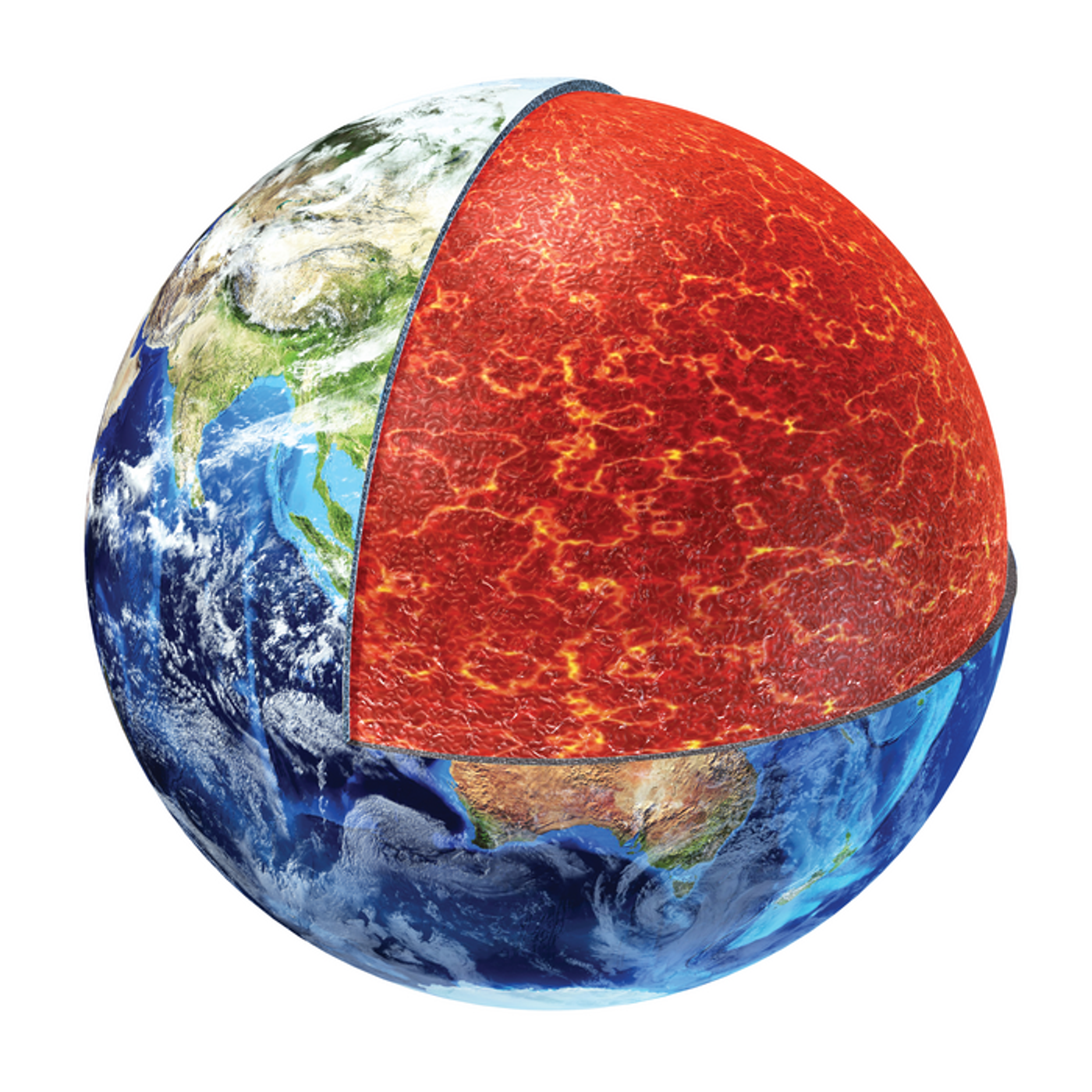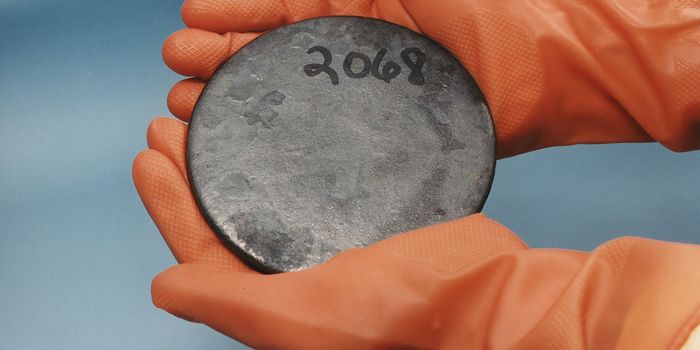New Molten Rock Layer Discovered Underneath Earth's Crust
The Earth with the upper mantle exposed. Researchers at The University of Texas at Austin have discovered a previously unknown layer of partly molten rock approximately 100 miles beneath the Earth's crust. (Credit: Leonello Calvetti/Dreamstime)
Like a number of planetary bodies, the Earth is a very complex geological machine that is comprised of a layered mixture of solid rock and molten rock that all works in tandem to allow life to thrive here. While the primary layers of the Earth are comprised of the crust, mantle, and core, there are many smaller layers within these larger layers that help drive the massive geological processes taking place.
As it turns out, scientists have discovered one such new layer within the crust that they previously overlooked, and is described in a recent study published in Nature Geoscience, where a team of researchers led by Brown University have discovered the existence of a new molten rock layer that lies approximately 100 miles beneath the Earth’s crust. While previous studies have found only patches of melt at similar depths, this most recent study is the first to confirm this melt exists globally and holds the potential to help scientists better understand the movement of tectonic plates, which has been a longstanding discussion.
This newly identified layer is part of the Earth’s asthenosphere, which rests in the upper mantle and is responsible for plate tectonics due to its soft characteristics. Much like the overall movement of tectonic plates, the reason behind this softness is still up to discussion. What this study demonstrates is that melt is not hypothesized to possess a considerable influence on the flow of the rocks within the mantle itself.
“When we think about something melting, we intuitively think that the melt must play a big role in the material’s viscosity,” said Dr. Junlin Hua, who is a postdoctoral fellow at the University of Texas at Austin’s Jackson School of Geosciences but conducted the research as a PhD student at Brown, and lead author of the study. “But what we found is that even where the melt fraction is quite high, its effect on mantle flow is very minor.”
For the study, the researchers examined data obtained from seismic stations all over the world to ascertain the existence of this new molten layer within the asthenosphere that rests approximately 100 miles beneath the Earth’s crust. They subsequently discovered this new layer does not play a significant role in influencing plate tectonics, as well.
“We can’t rule out that locally melt doesn’t matter,” said Dr. Thorsten Becker, who is a professor at at the University of Texas at Austin’s Jackson School of Geosciences and designs geodynamic models of the Earth at the Jackson School’s University of Texas Institute for Geophysics, and a co-author on the study. “But I think it drives us to see these observations of melt as a marker of what’s going on in the Earth, and not necessarily an active contribution to anything.”
Dr. Hua decided to look into the possibility of a new global layer when he was examining seismic images of the Earth’s mantle beneath Turkey during his PhD studies. To both his and his colleague’s surprise, they discovered the existence of this new layer after creating a global map of the asthenosphere and found the new layer appeared on seismic readings in hotspots within the asthenosphere, which they initially ruled as an anomaly. The researchers were also surprised to discover there was no connection between this new melt map and seismic measurements of plate tectonic movement.
“This work is important because understanding the properties of the asthenosphere and the origins of why it's weak is fundamental to understanding plate tectonics,” said Dr. Karen Fischer, who is a professor at Brown University and was Hua’s Ph.D. advisor when he began the research, and a co-author on the study.
What new layers of the Earth’s interior will scientists discover in the coming years and decades, and how do these layers help drive the complex geological processes taking place on our small, blue world? Only time will tell, and this is why we science !
Sources: Geological Survey Ireland, Nature Geoscience, EurekAlert!
As always, keep doing science & keep looking up!









